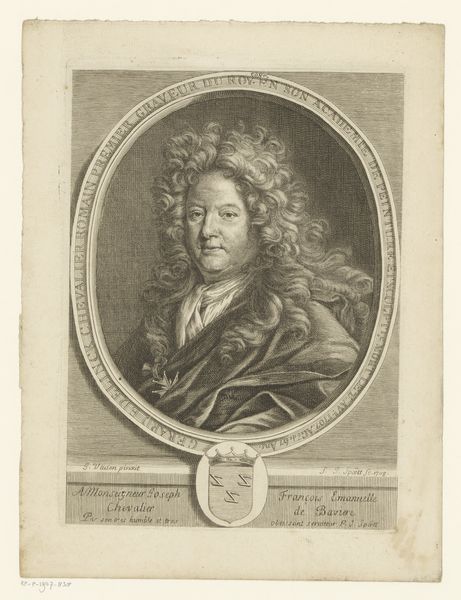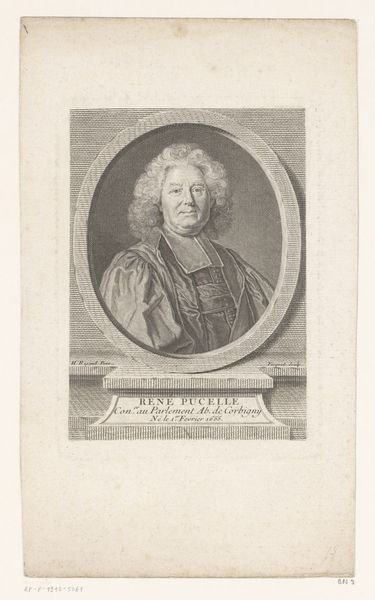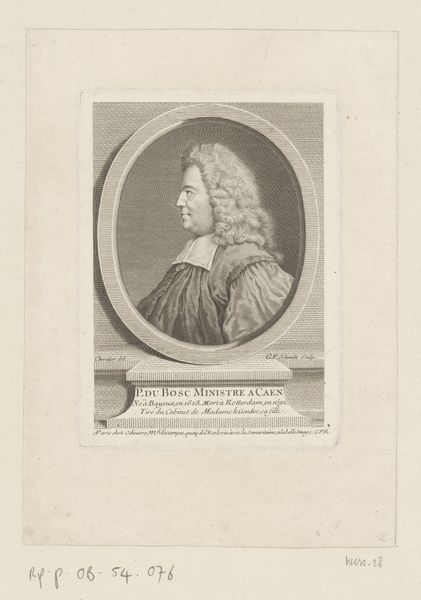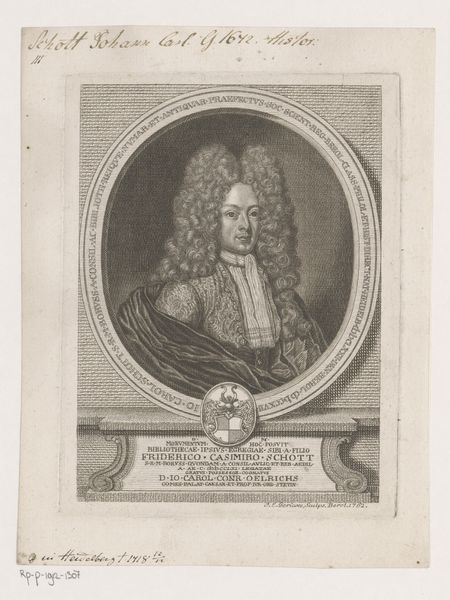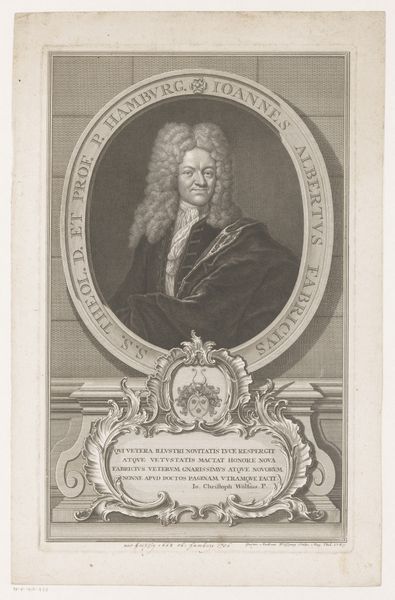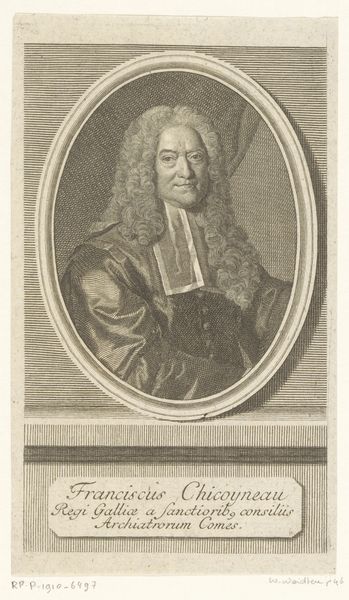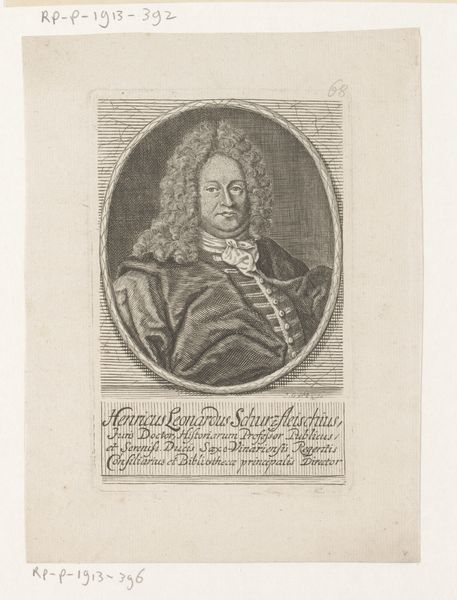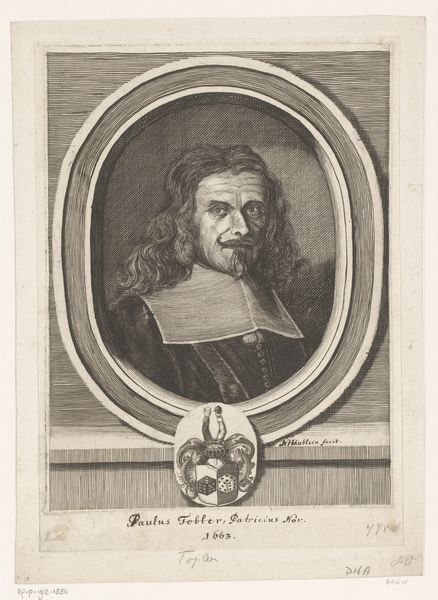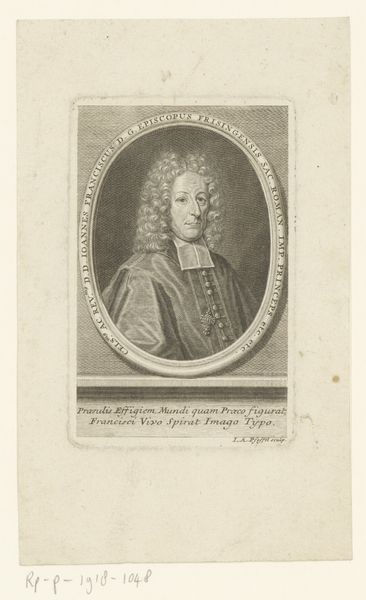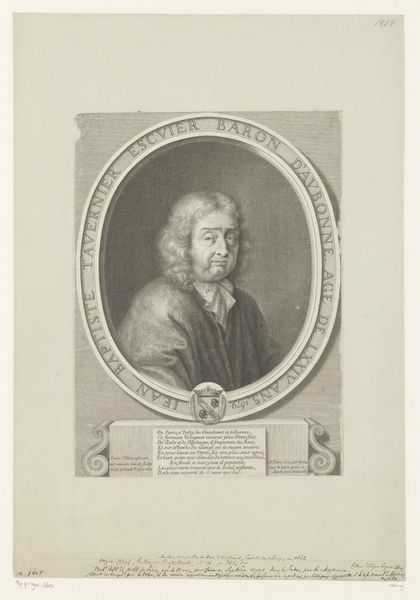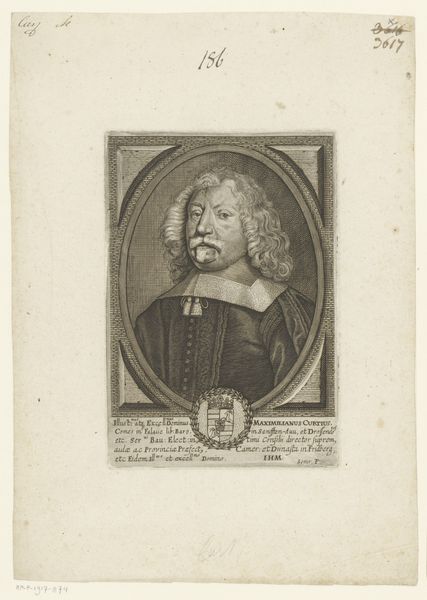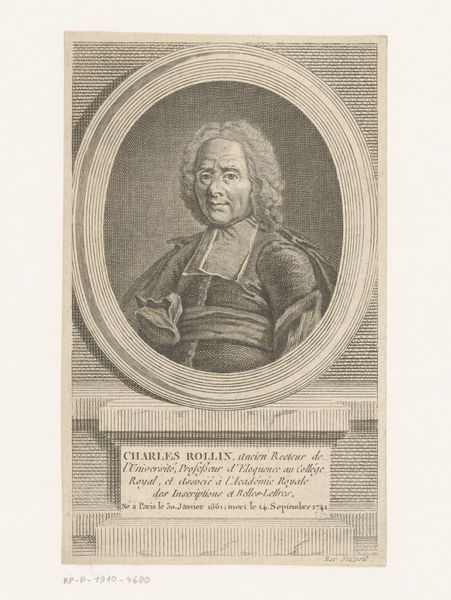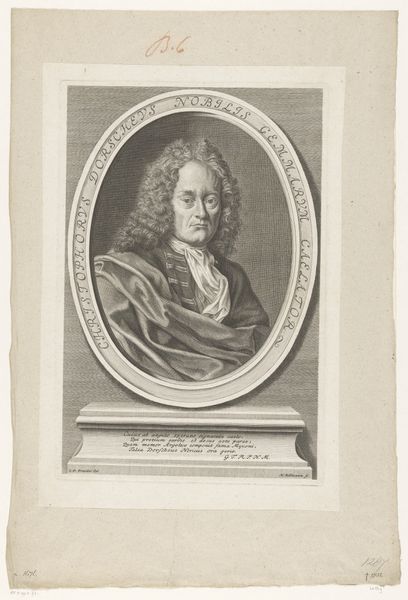
engraving
#
portrait
#
baroque
#
old engraving style
#
engraving
#
realism
Dimensions: height 237 mm, width 185 mm
Copyright: Rijks Museum: Open Domain
This portrait of Maximilian Kurtz von Senftenau was made by Joseph Anton Zimmermann using engraving techniques. Here, we can see how the material qualities of the metal plate, and the techniques used to manipulate it, have influenced the appearance of the print. Engraving is an intaglio process. The design is incised into a metal plate, typically copper, using a tool called a burin. The incised lines hold ink, and the image is transferred to paper under high pressure using a printing press. Zimmermann's skillful control of the burin allowed him to create fine lines and textures, and this gives the portrait a high level of detail. The hatching and cross-hatching create tonal variations, defining the form and capturing the likeness of the subject. Engraving, as a reproductive medium, played a crucial role in disseminating images and ideas, influencing art and culture. The labor-intensive process highlights the craftsmanship involved, and the resulting prints were accessible to a wider audience, democratizing art ownership. By understanding these processes, we can appreciate the work, and challenge the traditional hierarchy between fine art and craft.
Comments
No comments
Be the first to comment and join the conversation on the ultimate creative platform.
